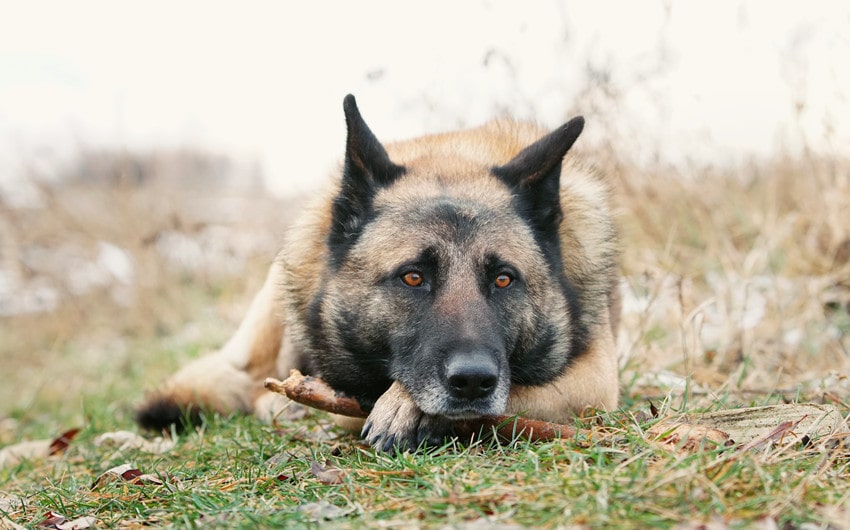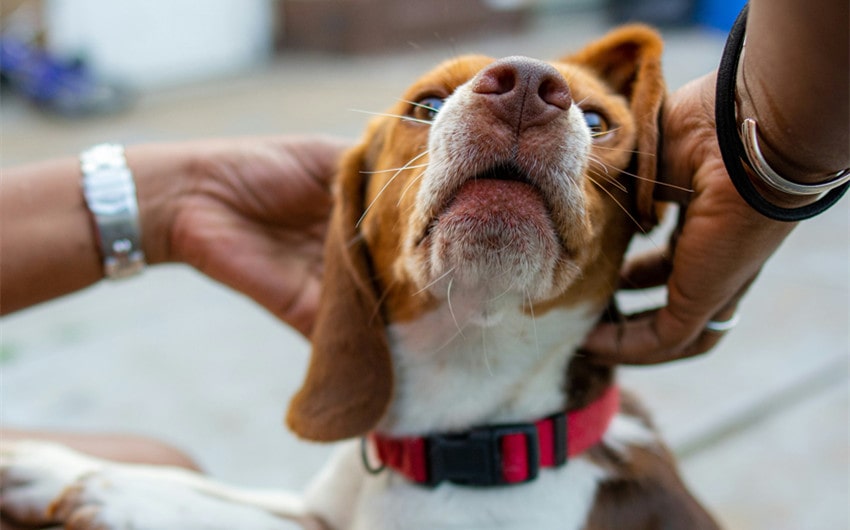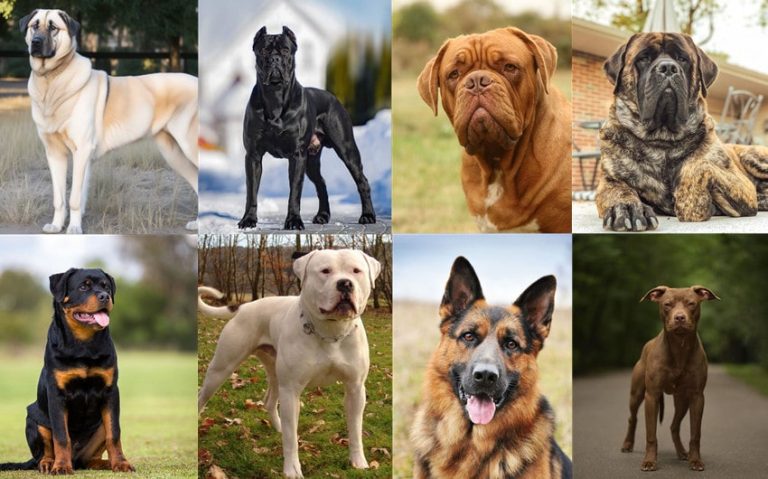Why Do Dogs Sigh and What Does It Mean?
Have you ever caught your dog in a moment of deep exhale and pondered, “Why do dogs sigh?” This seemingly simple behavior can express a complex array of emotions and physical states, from utter contentment to underlying health concerns. In this exploration, we uncover the layers behind each sigh, revealing insights into the emotional and physical well-being of our canine companions.
Understanding Dog Sighs

Dogs have a language all their own, and sighs are a significant part of their emotional vocabulary. Unlike the more overt signals of barking or whining, a sigh is a subtle, yet powerful, expression. Here’s what you need to know to decode this behavior:
What Exactly is a Dog Sigh?
A dog sigh is a deep exhalation, often accompanied by a slight deflation in posture, signaling a release of tension. It’s distinct from other vocalizations such as barks or whimpers, serving as a bridge between a dog’s active engagement with its environment and a more relaxed state. This audible breath out can be a sign of everything from satisfaction to mild disappointment.
When Do Dogs Typically Sigh?
Dogs might sigh in a variety of situations, each carrying its own message. Here are some of the most common:
- Settling Down for Rest: After a playful session or a busy day, a dog may sigh as it finds a comfortable spot to relax, indicating a transition from playtime or alertness to rest.
- After Receiving Affection: Post petting or cuddling, a sigh can express contentment, showing that your dog feels loved and secure in your care.
- Boredom or Frustration: In contrast, if a dog sighs while laying around with nothing to do, it might be expressing boredom or a subtle hint of frustration at the lack of activity.
- In Response to Disappointment: Sometimes, if a dog expects a treat, a walk, or playtime that doesn’t materialize, a sigh may reflect its disappointment or resignation to the current state of affairs.
Understanding these cues provides invaluable insights into your dog’s emotional state, helping you respond more empathetically to their needs and moods.
Why Does Your Dog Sigh?

1. Your Dog is Feeling Happy
One of the most heartwarming reasons a dog sighs is out of sheer contentment. This type of sigh usually occurs in serene moments, perhaps after your dog has curled up in its favorite spot or you’ve just finished a loving petting session. It’s a sign that your dog feels completely at ease, secure in its environment and your companionship. This sigh is a dog’s way of “exhaling” their happiness, a non-verbal way of telling you, “This is the life.”
2. Your Dog Wants Attention or is Bored
Dogs are social creatures, and they crave interaction with their human family members. A sigh might be your dog’s subtle method of communicating its desire for more attention or indicating that it’s bored with the current level of activity.
If your dog sighs and gives you “the look,” it might be hoping for a play session, a walk, or simply some cuddle time. This type of sigh serves as a gentle nudge, a reminder that they’re looking for engagement and enrichment.
3. Your Dog Could be Expressing Disappointment or Frustration
Not all sighs are created equal, and sometimes they can express more nuanced emotions like disappointment or frustration. If your dog was anticipating a treat, a walk, or some playtime that didn’t happen, a sigh might follow.
This is their way of resigning to the situation, a subtle expression of “I was hoping for more, but I guess this is it.” It’s a poignant reminder that our dogs have expectations and feelings that can be influenced by their interactions with us.
4. Your Dog Finds Comfort in Sleep
Sleeping is one of the reasons why your dog might sigh. Similar to humans, dogs experience different sleep cycles, including periods of deep relaxation. During these moments, they may release sighs as a natural way to unwind and relieve any built-up tension. So, if you notice your furry friend sighing while asleep, it’s likely a sign that they’re simply enjoying a peaceful rest.
5. Possible Health Issues or Discomfort
While many sighs are benign, it’s important to consider the context in which they occur. If your dog is sighing more frequently than usual, or if the sighs are accompanied by signs of discomfort or unusual behavior, it could be an indicator of underlying health issues.
Dogs can’t tell us when they’re in pain or feeling unwell, so these non-verbal cues are crucial for us to pick up on. A sudden increase in sighing, especially if it’s paired with lethargy, loss of appetite, or other changes in behavior, warrants a visit to the veterinarian to rule out any medical concerns.
Understanding the various reasons why your dog might sigh is key to providing the best care and ensuring a happy, healthy life together. By paying attention to the context and accompanying behaviors, dog owners can become more attuned to their pets’ needs and emotional states, fostering a deeper bond between human and canine.
Deciphering Dog Sighs: Happy, Upset, or Stressed?

Signs a Dog is Happy
A contented dog exudes a distinct aura of happiness, evident in various subtle cues. From their relaxed posture to their joyful vocalizations, here are some signs that your furry friend is feeling blissful and content.
- Relaxed Posture and Wagging Tail: A happy dog often has a loose, relaxed body posture with a gently wagging tail.
- Soft Eyes and Open Mouth: Contented dogs typically have soft, relaxed eyes and may exhibit a slightly open mouth, resembling a smile.
- Relaxed Vocalizations: Happy sighs may be accompanied by soft vocalizations like contented grunts or sighs of relaxation.
- Playfulness and Engagement: A joyful dog will show interest in play, toys, or interacting with you and other pets.
Signs a Dog is Upset
When a dog is upset or distressed, their body language and vocalizations often reflect their inner turmoil. Understanding these signs is crucial for recognizing when your pet is feeling uneasy or upset.
- Stiff Body and Lowered Ears: An upset dog may have a tense body posture with lowered or flattened ears.
- Tucked Tail or Tucked Between Legs: The tail may be tucked tightly against the body or tucked between the legs, indicating discomfort or fear.
- Vocalizations: Whimpering, growling, or excessive barking can signal distress or agitation.
- Avoidance of Eye Contact: An upset dog may avoid making eye contact or exhibit avoidance behavior, such as turning away or hiding.
Signs a Dog is Stressed or Anxious
Stress and anxiety can affect dogs just as they do humans, and it’s essential to be attuned to the signs that indicate your pet is experiencing heightened stress levels. From restlessness to destructive behaviors, here’s how to recognize when your dog is feeling anxious or stressed.
- Pacing or Restlessness: Dogs may pace back and forth or exhibit restless behavior when feeling stressed or anxious.
- Excessive Panting: Panting excessively, especially when not related to physical exertion or heat, can be a sign of stress or anxiety.
- Destructive Behavior: Stress may manifest in destructive behaviors like chewing furniture or excessive digging.
- Excessive Drooling: Stress-induced drooling, especially when accompanied by other signs of anxiety, may indicate heightened stress levels.
By recognizing these signs and understanding the context in which your dog sighs, you can better respond to their needs and provide them with the care and support they require.
Observing and Responding to Your Dog’s Sighs

Dogs, like humans, communicate through various subtle cues, and one such expression often overlooked is their sighs. Understanding when to pay attention to your dog’s sighs and how to respond appropriately can deepen your bond and ensure their well-being.
When to Pay Attention
Understanding when to tune into your dog’s sighs requires attentiveness and context:
- Frequency Check: Take note of how often your dog sighs. Occasional sighs during relaxation are normal, but frequent or sudden sighing, especially in unusual situations, might signal distress.
- Context Matters: Pay attention to the circumstances surrounding your dog’s sighs. Do they occur during specific activities, interactions, or environments? Context can offer valuable insights into what your dog is trying to communicate.
- Behavioral Observations: Watch for any accompanying behaviors or body language cues. Are there other signs of stress, discomfort, or relaxation? Observing your dog’s overall demeanor can help you interpret the meaning behind their sighs.
By being mindful of these factors, you can better understand when your dog is signaling for your attention or expressing their emotions through sighs.
Appropriate Responses
Responding to your dog’s sighs involves empathy and attentiveness to their needs:
- Comfort and Reassurance: If your dog sighs while resting or cuddling, it could be a sign of contentment. Respond with gentle affection, reassuring them of your presence and love.
- Play and Engagement: Sometimes, dogs sigh out of boredom or a desire for interaction. Engage them in play or offer stimulating activities to alleviate boredom and strengthen your bond.
- Check for Discomfort: Persistent or accompanied sighs, especially when coupled with other behavioral changes, may indicate discomfort or pain. Assess your dog for signs of injury, illness, or environmental stressors. Consulting a veterinarian is advisable if you suspect any health issues.
- Environmental Adjustment: If your dog sighs heavily in specific environments or situations, consider environmental adjustments to alleviate their stress. This could involve desensitization training, providing safe spaces, or avoiding triggers when possible.
- Training and Communication: Use sighs as an opportunity to enhance communication and reinforce positive behaviors. Reward calm and relaxed sighs during training sessions, encouraging your dog to express themselves in constructive ways.
In conclusion, paying attention to your dog’s sighs and responding appropriately is vital for their emotional and physical well-being. By understanding their cues and offering support, you strengthen the bond with your furry companion and ensure a happy, healthy relationship.
Conclusion
Understanding dog behaviors, such as sighing, is crucial for fostering a strong bond and ensuring their happiness. By paying attention to their non-verbal cues, like sighs, owners can better address their pets’ needs and strengthen their relationship. Ultimately, being attuned to these signals enhances communication and promotes the overall well-being of our canine companions.







